Evolution Model of Emergency Material Supply Chain Stress Based on Stochastic Petri Nets—A Case Study of Emergency Medical Material Supply Chains in China
Abstract
1. Introduction
2. Literature Review
2.1. Research on Supply Chain Pressure
2.2. Supply Chains for Emergency Medical Supplies
3. Fundamental Theories of Stress Evolution in Emergency Supply Chains
3.1. Distinction Between Traditional Commercial and Emergency Supply Chains
- Level of risk
- 2.
- Demand characteristics
- 3.
- Objectives
- 4.
- Regulatory mechanisms
- 5.
- Inventory strategies
- 6.
- Stages
- 7.
- Delivery cycle
3.2. The Concept of Emergency Supply Chain Stress (ESCS)
3.3. Sources and Characteristics of Stress in Emergency Supply Chains
3.3.1. Underlying and Direct Sources of Stress
3.3.2. Characteristics of Stress in the Emergency Supplies Supply Chain
- 1.
- Uncertainty and suddenness
- Preparation phase (24 days): Information was gathered to assess the scope of needs, and a comprehensive mobilization plan was developed.
- Implementation phase (15 days): Establishment of an interim command structure; integration of mobilized personnel from different units into field medical support teams; deployment of transport units to deliver essential items to the front line, such as containers, field rations, medicines, and fuel.
- Recovery phase (4 days): Inventory of mobilized resources; dismantling, transport, and return of equipment; operational summary and return of personnel to their units.
- 2.
- Timeliness
- 3.
- Huge volume
- 4.
- Latency
3.4. Causes and Evolutionary Mechanisms of ESCS
3.4.1. Causal Analysis of ESCS
3.4.2. Mechanisms of Stress Evolution in Emergency Supply Chains
4. Structured Description of the Evolution of Emergency Medical Supply Chain Stress (EMSCS)
4.1. Multiple Case Studies
4.2. Case Selection
4.3. Case Analysis and Processing
- Information is screened and organized around the core themes of event progression, the evolution of emergency supply chain stress, and the formulation of emergency response decisions.
- Collected data are categorized and analyzed accordingly, followed by a systematic consolidation of the findings.
4.4. Case Analysis Findings
- Stress Evolution of the Mask Supply Chain During the Initial COVID-19 Outbreak in China (Late 2019)
- 2.
- Stress Evolution of the Ibuprofen Supply Chain Following the Normalization of COVID-19 Control Measures in China (Late 2022)
5. Stochastic Petri Net Model Construction for Stress Evolution of Emergency Medical Supply Chain
- is a finite set of places;
- is a finite set of transitions;
- is a set of directed arcs from places to transitions;
- denotes the arc weight function;
- represents the set of markings;
6. Evolutionary Simulation Analysis of Supply Chain Stress
6.1. A Case Study of Ibuprofen in Beijing During the COVID-19 Pandemic
6.2. Scenario Analysis and Discussion
6.2.1. Scenario 1: Variations in the Cascade of Shock Events (λ2: Chain Reaction, λ3: Virus Transmission, λ4: Information Dissemination)
6.2.2. Scenario 2: Variations in Pharmaceutical Procurement (λ6: Bulk Purchasing, λ7: Panic Buying)
6.2.3. Scenario 3: Variations in Emergency Mobilization Measures (λ₁₁: Public Opinion Management, λ12: Capacity Expansion, λ₁₃: Enforcement Against Malpractice)
7. Conclusions
Author Contributions
Funding
Data Availability Statement
Conflicts of Interest
Appendix A
Appendix A.1
| P(M1) | P(M2) | P(M3) | P(M4) | P(M5) | P(M6) | P(M7) | P(M8) | P(M9) | P(M10) | P(M11) | |
|---|---|---|---|---|---|---|---|---|---|---|---|
| 0.0 | (235.8584,87.5716) | (22493.1599,36584) | (12063.6626,4533.0167) | (6706.4268,8757.3139) | (6706.4268,8757.3139) | (1026.787,497.121) | (3227.9898,3181.0986) | (15845.4139,10755.0996) | (885.4026,775.8071) | (6499.0482,4638.6265) | (2995.095,2527.1955) |
| 0.1 | (227.9529,94.4511) | (23685.1996,36264.5756) | (11611.9613,4850.1261) | (6858.2789,8690.2773) | (6858.2789,8690.2773) | (991.5507,517.16) | (3221.1286,3178.8058) | (15460.9858,10915.2034) | (871.6118,775.8367) | (6349.8524,4685.0654) | (2946.0796,2533.2933) |
| 0.2 | (220.0964,101.3925) | (24812.7007,35913.5074) | (11170.4851,5172.3337) | (7003.1877,8620.7319) | (7003.1877,8620.7319) | (957.5587,537.6951) | (3214.7401,3177.0338) | (15095.1063,11082.3295) | (859.0667,776.1883) | (6207.7882,4735.5944) | (2900.8499,2540.4848) |
| 0.3 | (212.2889,108.3949) | (25878.3875,35529.5474) | (10738.7064,5499.7688) | (7141.5113,8548.5002) | (7141.5113,8548.5002) | (924.74,558.7493) | (3208.8254,3175.7726) | (14746.7092,11256.8697) | (847.6899,776.8984) | (6072.6156,4790.3185) | (2859.1761,2548.875) |
| 0.4 | (204.5304,115.4571) | (26884.8298,35111.4084) | (10316.141,5832.5719) | (7273.5878,8473.3998) | (7273.5878,8473.3998) | (893.0287,580.3465) | (3203.3848,3175.0137) | (14414.8066,11439.2299) | (837.4085,778.0043) | (5944.104,4849.3494) | (2820.8435,2558.571) |
| 0.5 | (196.8212,122.5782) | (27834.455,34657.7594) | (9902.3438,6170.896) | (7399.7367,8395.2436) | (7399.7367,8395.2436) | (862.3635,602.5122) | (3198.4177,3174.7494) | (14098.4819,11629.8321) | (828.1545,779.544) | (5822.0316,4912.8054) | (2785.6509,2569.6825) |
| 0.6 | (189.1618,129.7573) | (28729.5594,34167.2215) | (9496.9061,6514.907) | (7520.261,8313.8391) | (7520.261,8313.8391) | (832.6878,625.2735) | (3193.9235,3174.9735) | (13796.883,11829.1166) | (819.8634,781.5567) | (5706.1856,4980.8119) | (2753.4095,2582.3224) |
| 0.7 | (181.5526,136.9932) | (29572.318,33638.3627) | (9099.4517,6864.7851) | (7635.4482,8228.9874) | (7635.4482,8228.9874) | (803.9489,648.6591) | (3189.9016,3175.6808) | (13509.217,12037.544) | (812.4749,784.0828) | (5596.3617,5053.5016) | (2723.942,2596.6068) |
| 0.8 | (173.9943,144.2852) | (30364.7942,33069.6936) | (8709.6344,7220.7258) | (7745.5719,8140.4836) | (7745.5719,8140.4836) | (776.0976,672.6997) | (3186.3512,3176.867) | (13234.7442,12255.5985) | (805.9315,787.1639) | (5492.3643,5131.0145) | (2697.081,2612.6561) |
| 0.9 | (166.4875,151.6321) | (31108.9482,32459.6614) | (8327.1354,7582.9412) | (7850.8932,8048.115) | (7850.8932,8048.115) | (749.0883,697.4278) | (3183.2722,3178.529) | (12972.7736,12483.7901) | (800.1791,790.8434) | (5394.0059,5213.498) | (2672.6682,2630.595) |
| 1.0 | (159.0332,159.0332) | (31806.645,31806.645) | (7951.6612,7951.6612) | (7951.6612,7951.6612) | (7951.6612,7951.6612) | (722.8783,722.8783) | (3180.6645,3180.6645) | (12722.658,12722.658) | (795.1661,795.1661) | (5301.1075,5301.1075) | (2650.5537,2650.5537) |
Appendix A.2
| P(M12) | P(M13) | P(M14) | P(M15) | P(M16) | P(M17) | P(M18) | P(M19) | P(M20) | P(M21) | |
|---|---|---|---|---|---|---|---|---|---|---|
| 0.0 | (5346.0122,3187.2822) | (1164.5871,1185.554) | (3086.4129,1420.8372) | (535.7226,170.0035) | (346.6699,91.2507) | (3367.4648,5653.7667) | (1329.5791,2552.9494) | (4.8279,244.9379) | (5882.971,1488.6412) | (835.9127,2039.2535) |
| 0.1 | (5177.1046,3244.7538) | (1156.3173,1178.6735) | (2959.2829,1467.9963) | (508.3719,180.8783) | (327.6993,98.9013) | (3467.2662,5535.2927) | (1386.6374,2492.215) | (18.1221,234.4345) | (5557.3493,1621.2368) | (896.258,1982.3344) |
| 0.2 | (5015.9108,3306.6099) | (1149.4653,1172.0858) | (2837.7025,1518.2564) | (482.1728,192.3811) | (309.5066,106.9889) | (3569.6937,5416.1204) | (1444.5812,2430.9125) | (31.2813,223.7308) | (5245.0685,1761.2364) | (956.8477,1924.6836) |
| 0.3 | (4862.1812,3372.9772) | (1143.9419,1165.8401) | (2721.4946,1571.7167) | (457.0882,204.5339) | (292.069,115.5285) | (3674.552,5296.4542) | (1503.3354,2369.1389) | (44.3094,212.8369) | (4945.7263,1908.9003) | (1017.6466,1866.378) |
| 0.4 | (4715.6745,3443.9888) | (1139.6627,1159.9859) | (2610.488,1628.4803) | (433.0821,217.3594) | (275.364,124.5358) | (3781.6517,5176.4936) | (1562.8263,2306.9882) | (57.2094,201.7621) | (4658.9291,2064.4964) | (1078.6179,1807.4916) |
| 0.5 | (4576.1579,3519.7837) | (1136.5486,1154.5735) | (2504.5163,1688.6542) | (410.1197,230.8808) | (259.3698,134.0266) | (3890.8082,5056.4337) | (1622.9803,2244.552) | (69.9831,190.5151) | (4384.2925,2228.3008) | (1139.7228,1748.0956) |
| 0.6 | (4443.4066,3600.5075) | (1134.5244,1149.6535) | (2403.4183,1752.3495) | (388.1668,245.1225) | (244.0649,144.0175) | (4001.8406,4936.4651) | (1683.724,2181.9191) | (82.6313,179.104) | (4121.4406,2400.5972) | (1200.9208,1688.2581) |
| 0.7 | (4317.2036,3686.312) | (1133.5188,1145.2778) | (2307.0379,1819.6814) | (367.1904,260.1095) | (229.4283,154.5252) | (4114.5709,4816.7746) | (1744.984,2119.1761) | (95.154,167.5361) | (3870.0062,2581.6776) | (1262.169,1628.0443) |
| 0.8 | (4197.3397,3777.3559) | (1133.4643,1141.4992) | (2215.2238,1890.7693) | (347.1586,275.8676) | (215.4395,165.5672) | (4228.8229,4697.5456) | (1806.6863,2056.4071) | (107.5501,155.8179) | (3629.6307,2771.842) | (1323.4229,1567.5168) |
| 0.9 | (4083.6134,3873.8046) | (1134.2958,1138.3719) | (2127.8294,1965.7371) | (328.0402,292.4236) | (202.0784,177.1611) | (4344.4214,4578.9586) | (1868.7561,1993.6942) | (119.8176,143.9555) | (3399.9641,2971.3988) | (1384.6352,1506.7353) |
| 1.0 | (3975.8306,3975.8306) | (1135.9516,1135.9516) | (2044.7129,2044.7129) | (309.805,309.805) | (189.3253,189.3253) | (4461.1918,4461.1918) | (1931.1177,1931.1177) | (131.954,131.954) | (3180.6645,3180.6645) | (1445.7566,1445.7566) |
References
- Khaswaneh, A.; Nagarur, N. Production Planning and Emergency Inventory for Demand Surge in Health Supply Chains for Pandemics like COVID-19. Ind. Syst. Eng. Rev. 2021, 9, 32–46. [Google Scholar] [CrossRef]
- Bhaskar, S.; Tan, J.; Bogers, M.L.A.M.; Minssen, T.; Badaruddin, H.; Israeli-Korn, S.; Chesbrough, H. At the Epicenter of COVID-19–the Tragic Failure of the Global Supply Chain for Medical Supplies. Front. Public Health 2020, 8, 562882. [Google Scholar] [CrossRef] [PubMed]
- Khojasteh, Y.; Xu, H.; Zolfaghari, S. (Eds.) Supply Chain Risk Mitigation: Strategies, Methods and Applications; International Series in Operations Research & Management Science; Springer International Publishing: Cham, Switzerland, 2022; Volume 332, ISBN 978-3-031-09182-7. [Google Scholar]
- Krause, T.A.; Tse, Y. Risk Management and Firm Value: Recent Theory and Evidence. Int. J. Account. Inf. Manag. 2016, 24, 56–81. [Google Scholar] [CrossRef]
- Bracci, E.; Tallaki, M.; Gobbo, G.; Papi, L. Risk Management in the Public Sector: A Structured Literature Review. Int. J. Public Sect. Manag. 2021, 34, 205–223. [Google Scholar] [CrossRef]
- Charles, A.; Lauras, M.; Van Wassenhove, L.N.; Dupont, L. Designing an Efficient Humanitarian Supply Network. J. Oper. Manag. 2016, 47–48, 58–70. [Google Scholar] [CrossRef]
- Noham, R.; Tzur, M. Designing Humanitarian Supply Chains by Incorporating Actual Post-Disaster Decisions. Eur. J. Oper. Res. 2018, 265, 1064–1077. [Google Scholar] [CrossRef]
- Wang, Z.; Zhang, J. Agent-Based Evaluation of Humanitarian Relief Goods Supply Capability. Int. J. Disaster Risk Reduct. 2019, 36, 101105. [Google Scholar] [CrossRef]
- Diabat, A.; Jabbarzadeh, A.; Khosrojerdi, A. A Perishable Product Supply Chain Network Design Problem with Reliability and Disruption Considerations. Int. J. Prod. Econ. 2019, 212, 125–138. [Google Scholar] [CrossRef]
- Fahimnia, B.; Jabbarzadeh, A.; Ghavamifar, A.; Bell, M. Supply Chain Design for Efficient and Effective Blood Supply in Disasters. Int. J. Prod. Econ. 2017, 183, 700–709. [Google Scholar] [CrossRef]
- Rahmani, D.; Zandi, A.; Peyghaleh, E.; Siamakmanesh, N. A Robust Model for a Humanitarian Relief Network with Backup Covering under Disruptions: A Real World Application. Int. J. Disaster Risk Reduct. 2018, 28, 56–68. [Google Scholar] [CrossRef]
- Zokaee, S.; Bozorgi-Amiri, A.; Sadjadi, S.J. A Robust Optimization Model for Humanitarian Relief Chain Design under Uncertainty. Appl. Math. Model. 2016, 40, 7996–8016. [Google Scholar] [CrossRef]
- Mansoori, S.; Bozorgi-Amiri, A.; Pishvaee, M.S. A Robust Multi-Objective Humanitarian Relief Chain Network Design for Earthquake Response, with Evacuation Assumption under Uncertainties. Neural Comput. Appl. 2020, 32, 2183–2203. [Google Scholar] [CrossRef]
- Zhang, J.; Wang, Z.; Ren, F. Optimization of Humanitarian Relief Supply Chain Reliability: A Case Study of the Ya’an Earthquake. Ann. Oper. Res. 2019, 283, 1551–1572. [Google Scholar] [CrossRef]
- Dubey, R.; Gunasekaran, A.; Bryde, D.J.; Dwivedi, Y.K.; Papadopoulos, T. Blockchain Technology for Enhancing Swift-Trust, Collaboration and Resilience within a Humanitarian Supply Chain Setting. Int. J. Prod. Res. 2020, 58, 3381–3398. [Google Scholar] [CrossRef]
- Song, J.M.; Chen, W.; Lei, L. Supply Chain Flexibility and Operations Optimisation under Demand Uncertainty: A Case in Disaster Relief. Int. J. Prod. Res. 2018, 56, 3699–3713. [Google Scholar] [CrossRef]
- Singh, R.K.; Gupta, A.; Gunasekaran, A. Analysing the Interaction of Factors for Resilient Humanitarian Supply Chain. Int. J. Prod. Res. 2018, 56, 6809–6827. [Google Scholar] [CrossRef]
- Maghsoudi, A.; Zailani, S.; Ramayah, T.; Pazirandeh, A. Coordination of Efforts in Disaster Relief Supply Chains: The Moderating Role of Resource Scarcity and Redundancy. Int. J. Logist. Res. Appl. 2018, 21, 407–430. [Google Scholar] [CrossRef]
- Kunz, N.; Gold, S. Sustainable Humanitarian Supply Chain Management—Exploring New Theory. Int. J. Logist. Res. Appl. 2017, 20, 85–104. [Google Scholar] [CrossRef]
- Altay, N.; Gunasekaran, A.; Dubey, R.; Childe, S.J. Agility and Resilience as Antecedents of Supply Chain Performance under Moderating Effects of Organizational Culture within the Humanitarian Setting: A Dynamic Capability View. Prod. Plan. Control 2018, 29, 1158–1174. [Google Scholar] [CrossRef]
- Chen, F.; Liu, S.; Appolloni, A. Horizontal Coordination of I-LNGOs in the Humanitarian Supply Chain: An Evolutionary Game Approach. Sustainability 2020, 12, 5953. [Google Scholar] [CrossRef]
- Izadikhah, M.; Azadi, M.; Kahi, V.S.; Saen, R.F. Developing a New Chance Constrained NDEA Model to Measure the Performance of Humanitarian Supply Chains. Int. J. Prod. Res. 2019, 57, 662–682. [Google Scholar] [CrossRef]
- Dubey, R. Design and Management of Humanitarian Supply Chains: Challenges, Solutions, and Frameworks. Ann. Oper. Res. 2022, 319, 1–14. [Google Scholar] [CrossRef] [PubMed]
- Zhu, Q.; Geng, Y. Study on Factors of Green Supply Chain Management among Chinese Manufacturers. Chin. J. Manag. Sci. 2004, 12, 81–85. [Google Scholar]
- Qu, Y.; Zhu, Q.; Wu, C. An Empirical Study on Drivers/Pressures Affecting GSCM Implementation. Forecasting 2007, 26, 1–6. [Google Scholar]
- Huang, W.; Chen, Z. Foreign Entry, Supply Chain Pressure and CSR in China. J. Manag. World 2015, 2, 91–100+132. [Google Scholar] [CrossRef]
- Yao, W.X.; You, J.M. A Probe into the Method of Controlling the Extreme Risk of Supply Chain Based on Pressure Testing. Econ. Surv. 2010, 5, 86–90. [Google Scholar] [CrossRef]
- Yao, W.X.; Chen, Q. The Treatment after Supply Chain Stress Test from the Perspective of Resilience. Sci. Technol. Manag. Res. 2015, 35, 193–197. [Google Scholar]
- Cannella, S.; Ciancimino, E. On the Bullwhip Avoidance Phase: Supply Chain Collaboration and Order Smoothing. Int. J. Prod. Res. 2010, 48, 6739–6776. [Google Scholar] [CrossRef]
- Luo, L. Supply Chain Stress. Ph.D. Thesis, Washington State University, Pullman, WA, USA, 2019. [Google Scholar]
- Luo, L.; Munson, C.L. Developing a Supply Chain Stress Test. In Supply Chain Risk Mitigation: Strategies, Methods and Applications; Khojasteh, Y., Xu, H., Zolfaghari, S., Eds.; Springer International Publishing: Cham, Switzerland, 2022; pp. 61–80. ISBN 978-3-031-09183-4. [Google Scholar]
- Ivanov, D.; Dolgui, A. Stress Testing Supply Chains and Creating Viable Ecosystems. Oper. Manag. Res. 2022, 15, 475–486. [Google Scholar] [CrossRef]
- Ivanov, D. Intelligent Digital Twin (iDT) for Supply Chain Stress-Testing, Resilience, and Viability. Int. J. Prod. Econ. 2023, 263, 108938. [Google Scholar] [CrossRef]
- Shen, W.M. SAIC resumed work and production pressure testing the first complete car off the production line. People’s Daily 2022-04-20(004). Available online: https://paper.people.com.cn/rmrb/html/2022-04/20/nw.D110000renmrb_20220420_5-04.htm (accessed on 29 May 2025).
- Sun, Y.; Liu, H.P.; Yan, R.; Zhang, Q. Equilibrium Optimization of the Supply Chain of Emergency Medical Supplies Based on Resilience and Social Welfare. Chin. J. Manag. Sci. 2023, 31, 132–141. [Google Scholar]
- Büyüktahtakın, İ.E.; des-Bordes, E.; Kıbış, E.Y. A New Epidemics–Logistics Model: Insights into Controlling the Ebola Virus Disease in West Africa. Eur. J. Oper. Res. 2018, 265, 1046–1063. [Google Scholar] [CrossRef]
- Huo, J.Z.; Zhang, J.W.; Xu, S.Y. Analysis of Strategic Reserve and Rotation Policy of Emergency Medical Supplies: Taking Masks as an Exampl. Shanghai Manag. Sci. 2023, 45, 43–49. [Google Scholar]
- Paul, S.; Venkateswaran, J. Impact of Drug Supply Chain on the Dynamics of Infectious Diseases. Syst. Dyn. Rev. 2017, 33, 280–310. [Google Scholar] [CrossRef]
- Queiroz, M.M.; Ivanov, D.; Dolgui, A.; Fosso Wamba, S. Impacts of Epidemic Outbreaks on Supply Chains: Mapping a Research Agenda amid the COVID-19 Pandemic through a Structured Literature Review. Ann Oper Res 2022, 319, 1159–1196. [Google Scholar] [CrossRef]
- Paul, S.; Venkateswaran, J. Designing Robust Policies under Deep Uncertainty for Mitigating Epidemics. Comput. Ind. Eng. 2020, 140, 106221. [Google Scholar] [CrossRef]
- Liu, M.; Zhang, D. A Dynamic Logistics Model for Medical Resources Allocation in an Epidemic Control with Demand Forecast Updating. J. Oper. Res. Soc. 2016, 67, 841–852. [Google Scholar] [CrossRef]
- Anparasan, A.A.; Lejeune, M.A. Data Laboratory for Supply Chain Response Models during Epidemic Outbreaks. Ann. Oper. Res. 2018, 270, 53–64. [Google Scholar] [CrossRef]
- Govindan, K.; Mina, H.; Alavi, B. A Decision Support System for Demand Management in Healthcare Supply Chains Considering the Epidemic Outbreaks: A Case Study of Coronavirus Disease 2019 (COVID-19). Transp. Res. Part E Logist. Transp. Rev. 2020, 138, 101967. [Google Scholar] [CrossRef]
- Shi, W.Q.; He, J.; Wang, M.Y. System dynamics model of emergency medical materials supply chain considering decision maker’s overconfidence bias. J. Saf. Environ. 2023, 23, 1545–1555. [Google Scholar] [CrossRef]
- Song, Y.; Xu, H.; Fang, D.; Sang, X. Modelling and Analysis of Emergency Scenario Evolution System Based on Generalized Stochastic Petri Net. Systems 2025, 13, 107. [Google Scholar] [CrossRef]
- Ivanov, D. Predicting the Impacts of Epidemic Outbreaks on Global Supply Chains: A Simulation-Based Analysis on the Coronavirus Outbreak (COVID-19/SARS-CoV-2) Case. Transp. Res. Part E Logist. Transp. Rev. 2020, 136, 101922. [Google Scholar] [CrossRef] [PubMed]
- Zhang, M.; She, L.; Geng, B. Research on the Similarity of the Structured Emergency Events Based on Scenario. Chin. J. Manag. Sci. 2017, 25, 151–159. [Google Scholar]
- Gong, L.; Zhang, J.; Li, B. Research on Post-Disaster Emergency Material’s Mobilization Production Considering Raw Material Supply. Xitong Gongcheng Lilun Yu Shijian/Syst. Eng. Theory Pract. 2018, 38, 2600–2610. [Google Scholar]
- Ling-jun, G.; Ji-hai, Z. Multi-Objective Emergency Production Assignment Model Based on NSGA-II. Oper. Res. Manag. Sci. 2019, 28, 7. [Google Scholar]
- Gong, L.; Zhang, J. System-Dynamics-Based Emergency Transportation Strategy Analysis for Oil Products. Xitong Gongcheng Lilun Yu Shijian/Syst. Eng. Theory Pract. 2017, 37, 2256–2267. [Google Scholar]
- Liu, M.P. Research on Mechanism Construction of Collaborative Governance of Online Public Opinion on Major Emergencies. Truth Seek. 2022, 64–76, 111. [Google Scholar]
- Daniels, R.; Kettl, D.; Kunreuther, H. On Risk and Disaster: Lessons from Hurricane Katrina; University of Pennsylvania Press: Philadelphia, PA, USA, 2006; ISBN 978-0-8122-1959-3. [Google Scholar]
- Jie, G.; Licheng, Y.; Zixu, S. Crisis Management Based on Science and Technology Perspective and Double-Cycle Theory. Sci. Technol. Prog. Policy 2020, 37, 8–13. [Google Scholar]
- Benbasat, I.; Goldstein, D.K.; Mead, M. The Case Research Strategy in Studies of Information Systems. MIS Q. 1987, 11, 369–386. [Google Scholar] [CrossRef]
- Guo, C.; Song, Y. A New Stochastic Petri Net Modeling Approach for the Evolution of Online Public Opinion on Emergencies: Based on Four Real-Life Cases. Systems 2024, 12, 333. [Google Scholar] [CrossRef]
- Lin, C. Stochastic Petri Nets and System Performance Evaluation; Tsinghua University Press: Beijing, China, 2005. (In Chinese) [Google Scholar]
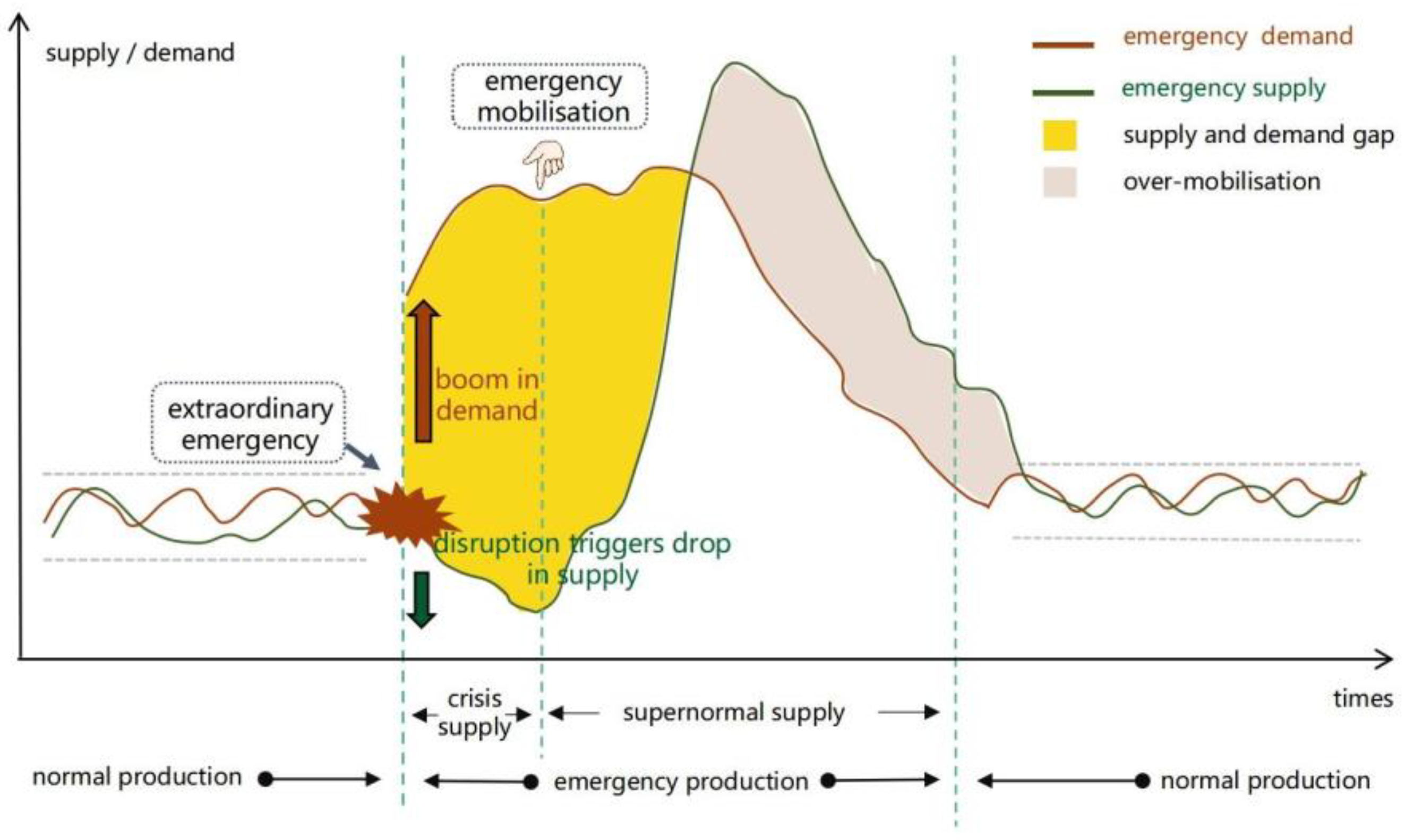


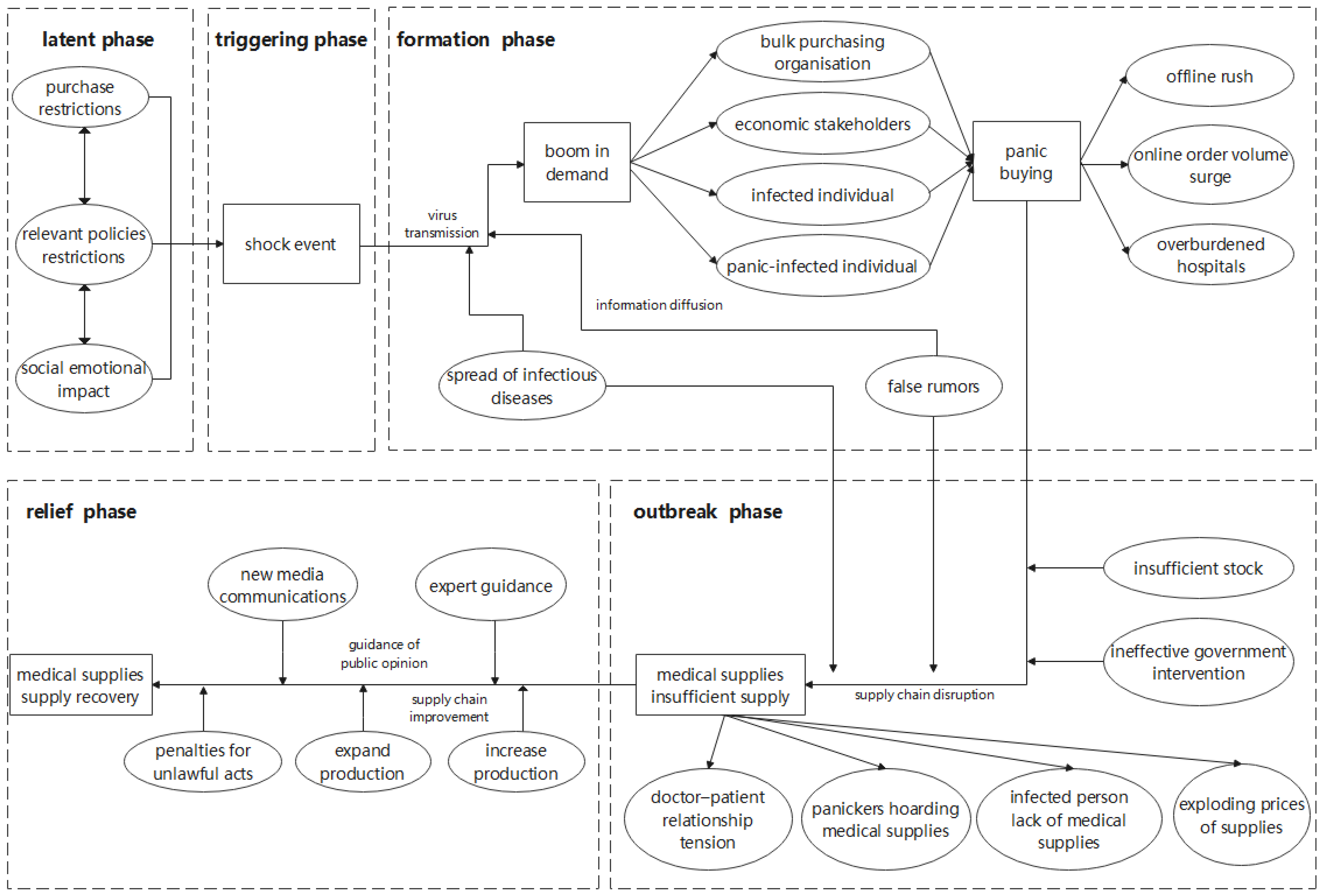


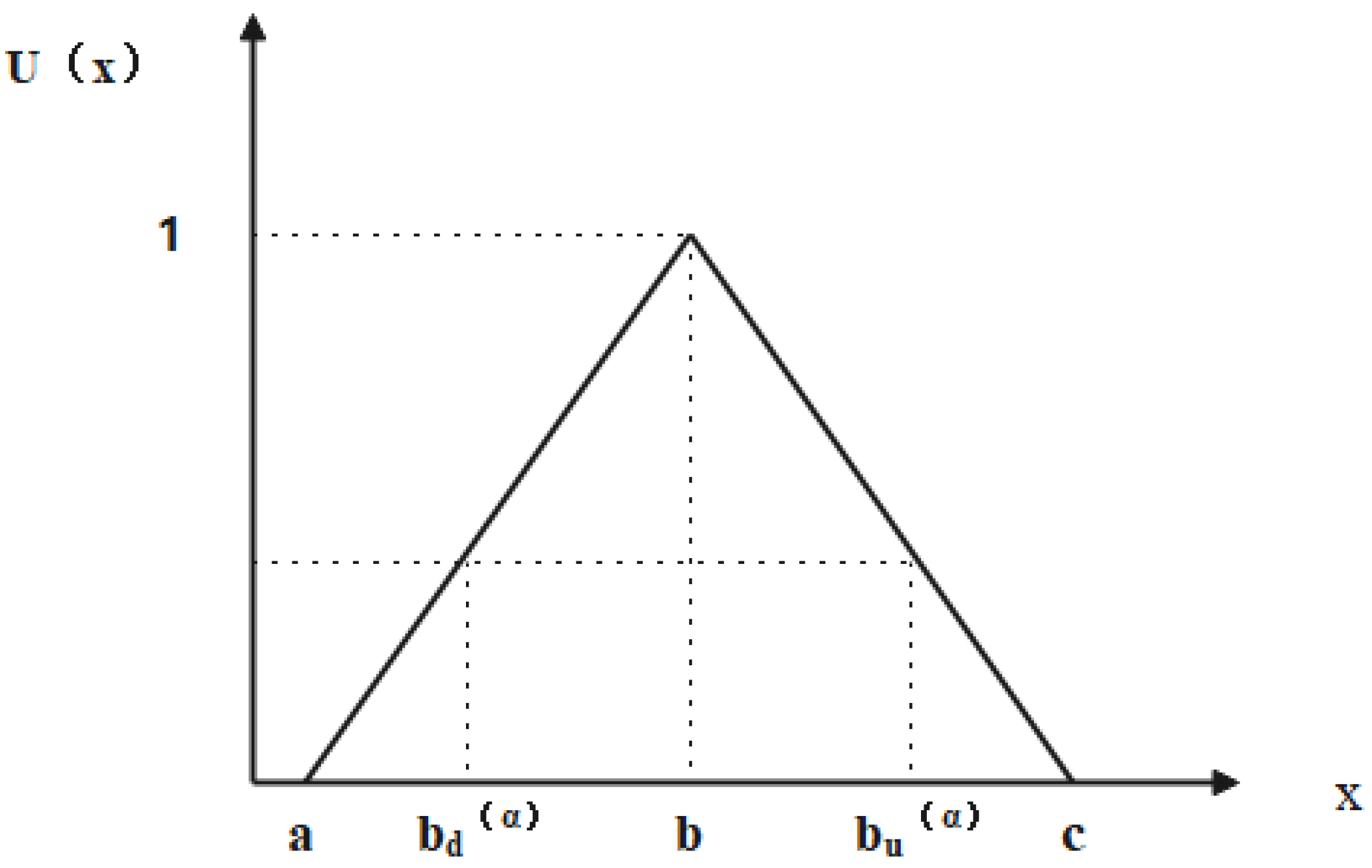
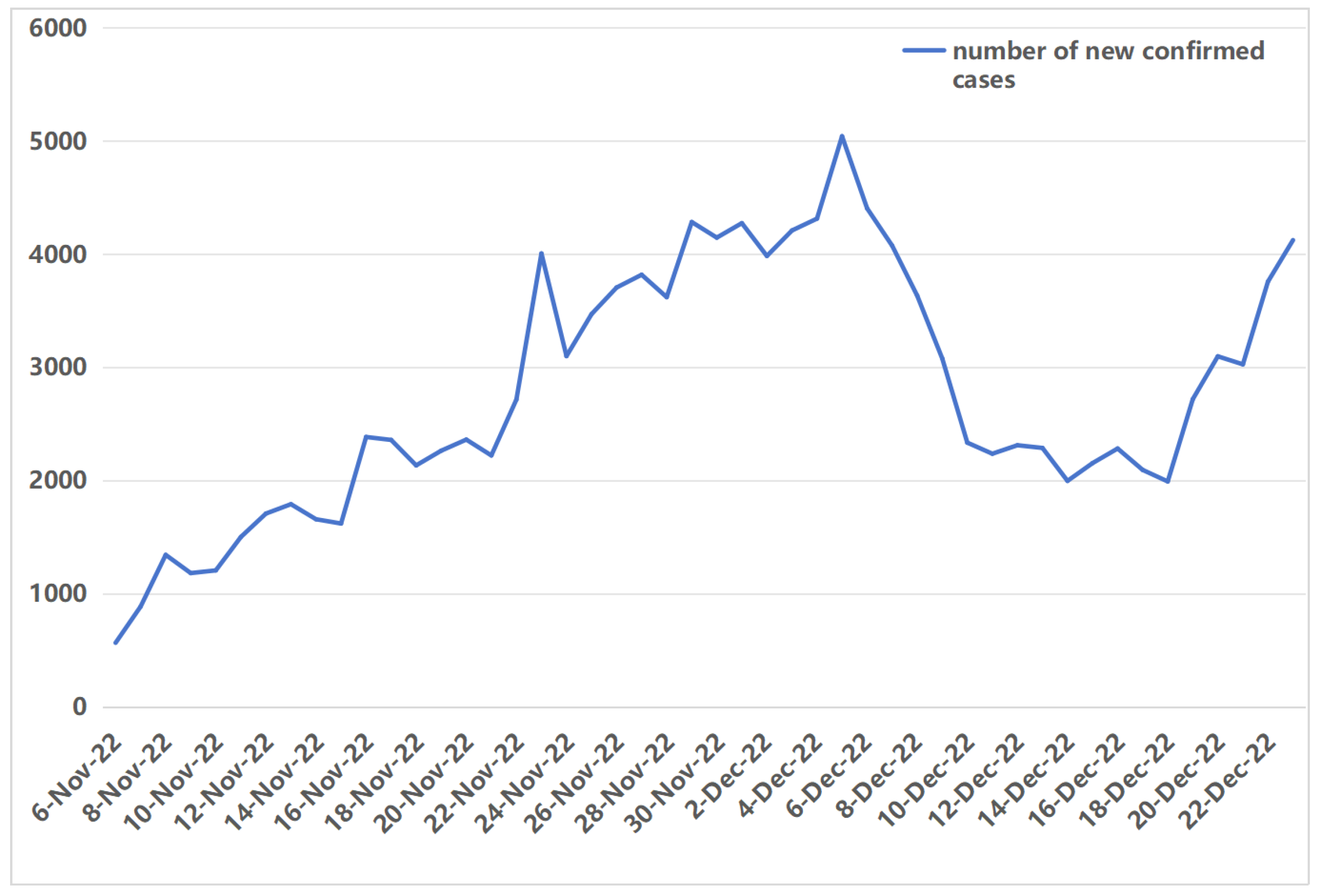



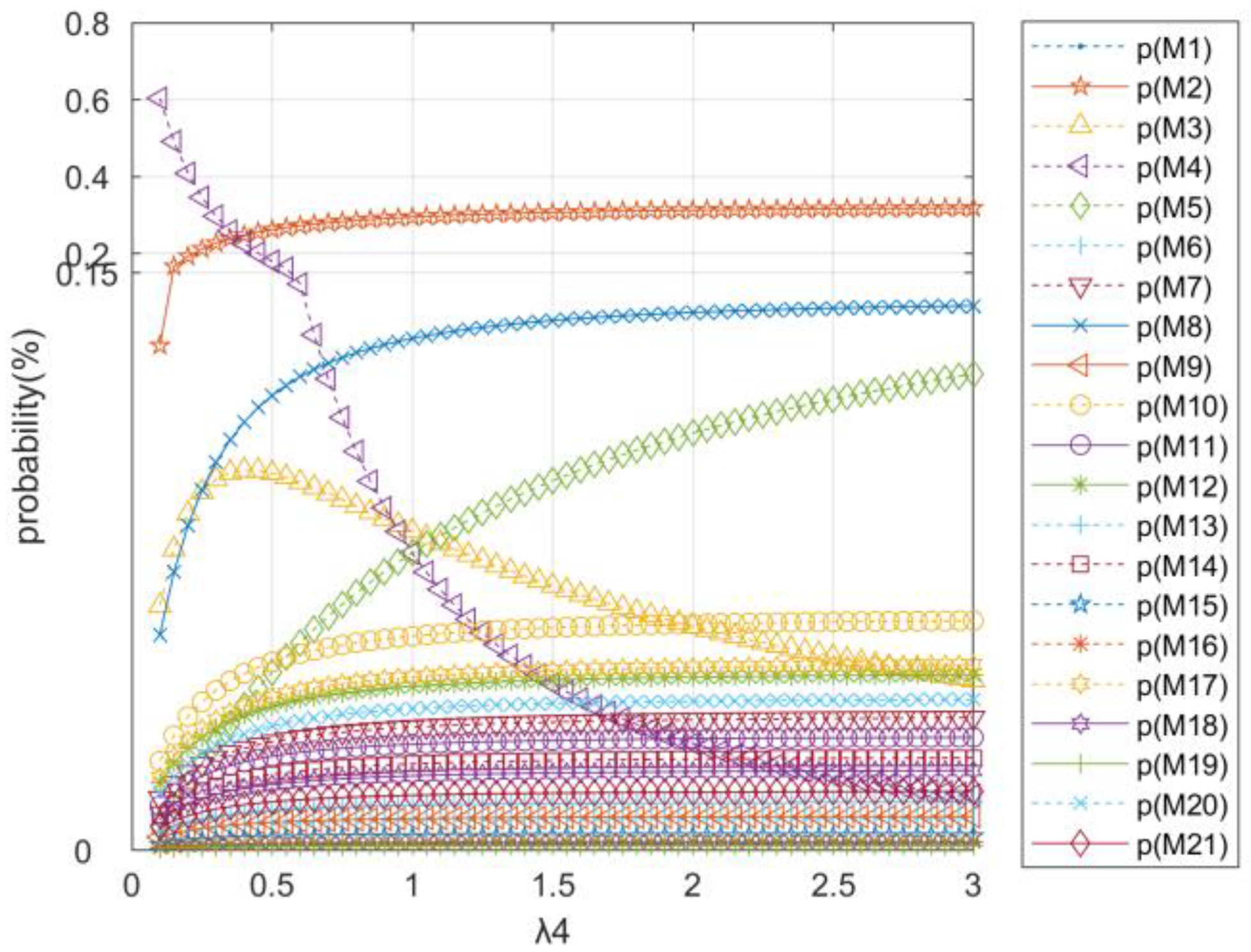


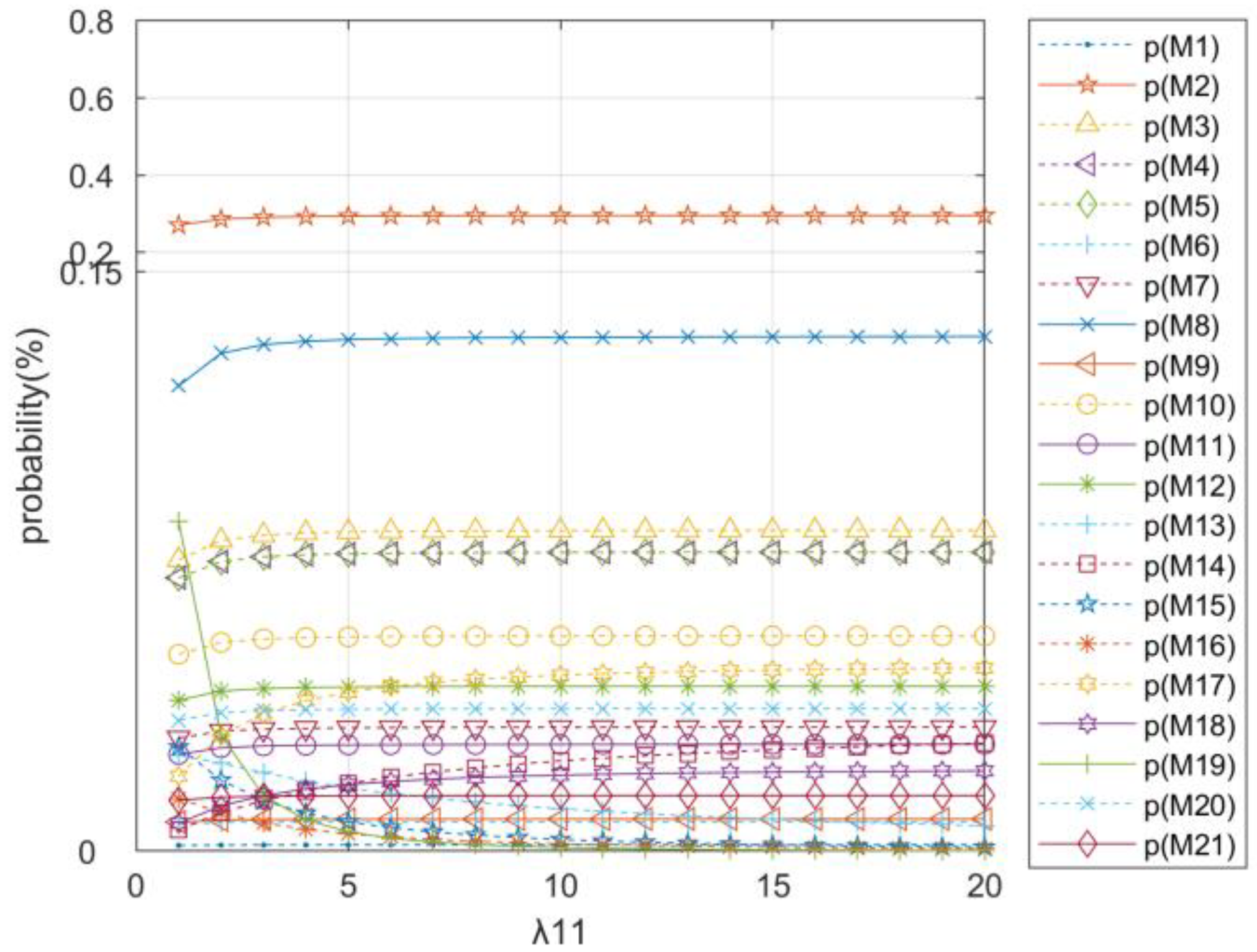
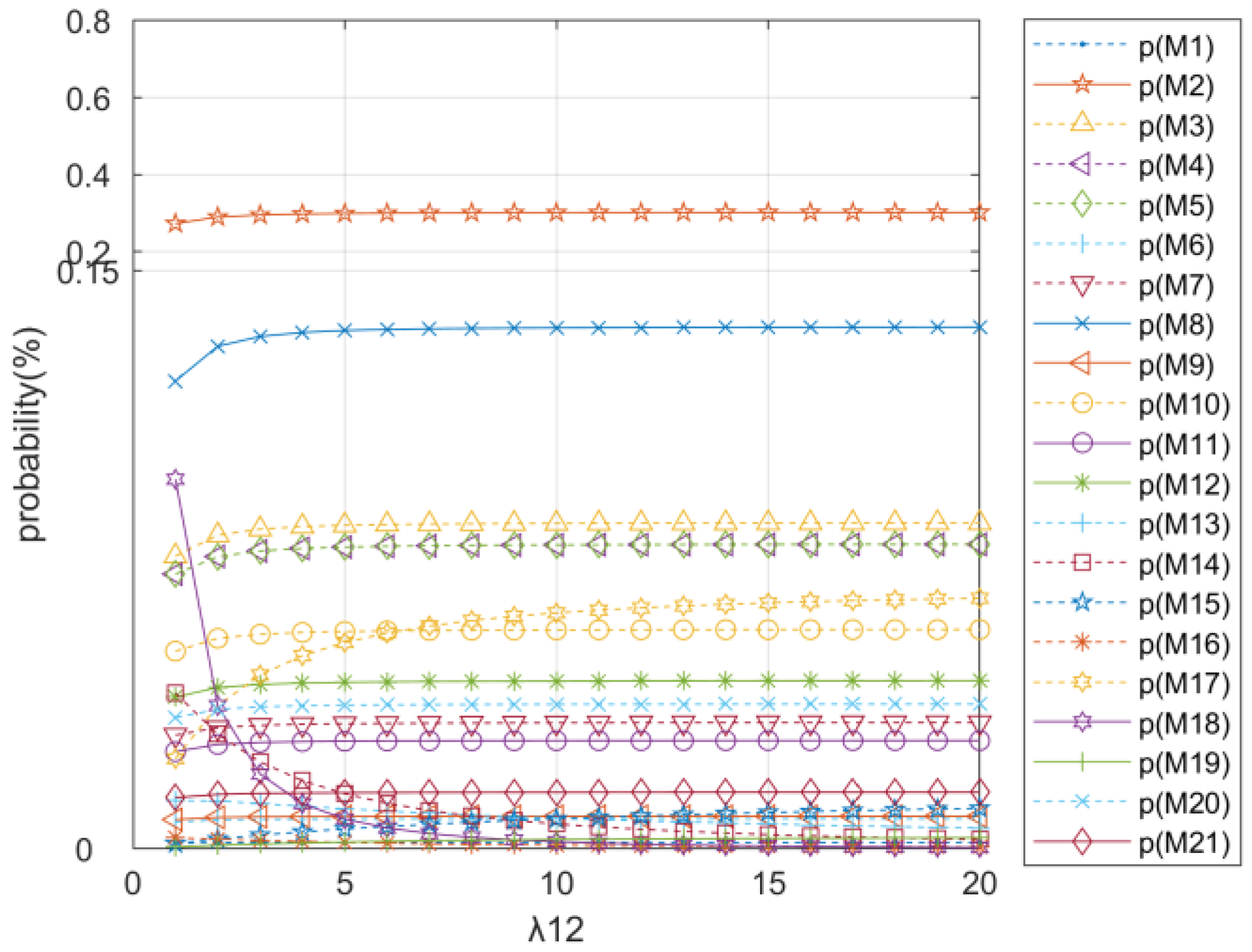
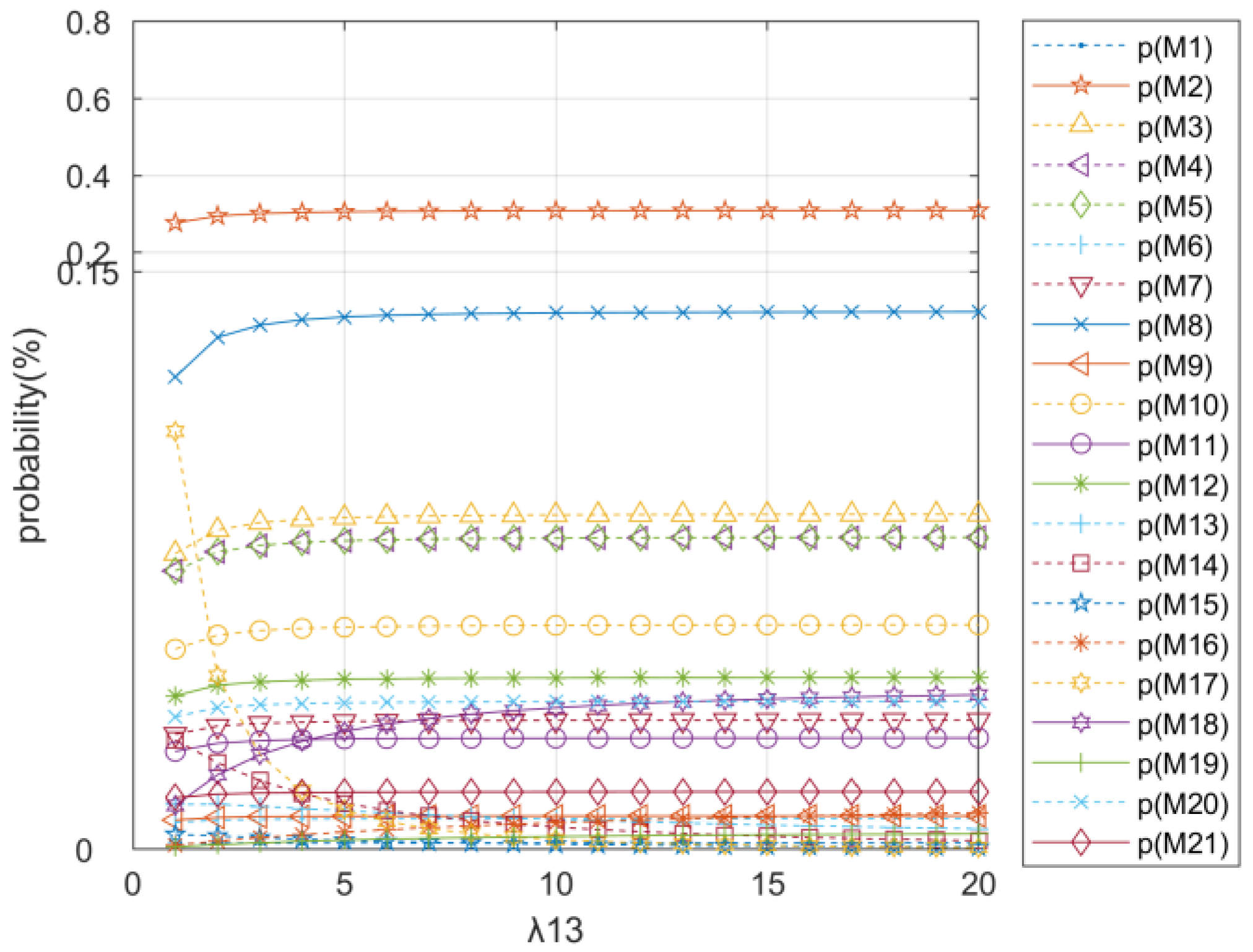
| Place | Attribute State | Transition | Meaning of Change |
|---|---|---|---|
| P1 | Purchase restrictions | t1 | Environmental developments |
| P2 | Related policy restrictions | t2 | A series of chain reactions |
| P3 | Socio-emotional impact | t3 | Spread of viruses |
| P4 | Shock events | t4 | Information dissemination |
| P5 | Increased turnover | t5 | Demand surge |
| P6 | Misinformation generation | t6 | Bulk purchasing |
| P7 | Spread of infectious diseases | t7 | People rush to buy |
| P8 | Spread of rumors | t8 | Imbalance between supply and demand |
| P9 | Bulk purchasing organizations | t9 | Government intervention |
| P10 | Economic stakeholders | t10 | Emergency mobilization |
| P11 | People infected with the virus | t11 | Public opinion control |
| P12 | Panic infected | t12 | Capacity enhancement |
| P13 | Large customer order generation | t13 | Punishment of unruly behavior |
| P14 | Retail disorder | t14 | Supply and demand docking |
| P15 | Insufficient supply | t15 | Supply and demand balancing |
| P16 | Setting up a special team | ||
| P17 | Experts to dispel rumors and provide positive guidance | ||
| P18 | Replenish and fix the chain (stabilize production, reach production, change production, increase production, and expand production) | ||
| P19 | Investigating and dealing with typical hoarding and sales shyness | ||
| P20 | Demand for hoarding subsides | ||
| P21 | Increase in supply | ||
| P22 | Prices stabilize | ||
| P23 | Sufficient supply |
Disclaimer/Publisher’s Note: The statements, opinions and data contained in all publications are solely those of the individual author(s) and contributor(s) and not of MDPI and/or the editor(s). MDPI and/or the editor(s) disclaim responsibility for any injury to people or property resulting from any ideas, methods, instructions or products referred to in the content. |
© 2025 by the authors. Licensee MDPI, Basel, Switzerland. This article is an open access article distributed under the terms and conditions of the Creative Commons Attribution (CC BY) license (https://creativecommons.org/licenses/by/4.0/).
Share and Cite
Chen, Q.; Zhang, J. Evolution Model of Emergency Material Supply Chain Stress Based on Stochastic Petri Nets—A Case Study of Emergency Medical Material Supply Chains in China. Systems 2025, 13, 423. https://doi.org/10.3390/systems13060423
Chen Q, Zhang J. Evolution Model of Emergency Material Supply Chain Stress Based on Stochastic Petri Nets—A Case Study of Emergency Medical Material Supply Chains in China. Systems. 2025; 13(6):423. https://doi.org/10.3390/systems13060423
Chicago/Turabian StyleChen, Qiming, and Jihai Zhang. 2025. "Evolution Model of Emergency Material Supply Chain Stress Based on Stochastic Petri Nets—A Case Study of Emergency Medical Material Supply Chains in China" Systems 13, no. 6: 423. https://doi.org/10.3390/systems13060423
APA StyleChen, Q., & Zhang, J. (2025). Evolution Model of Emergency Material Supply Chain Stress Based on Stochastic Petri Nets—A Case Study of Emergency Medical Material Supply Chains in China. Systems, 13(6), 423. https://doi.org/10.3390/systems13060423







